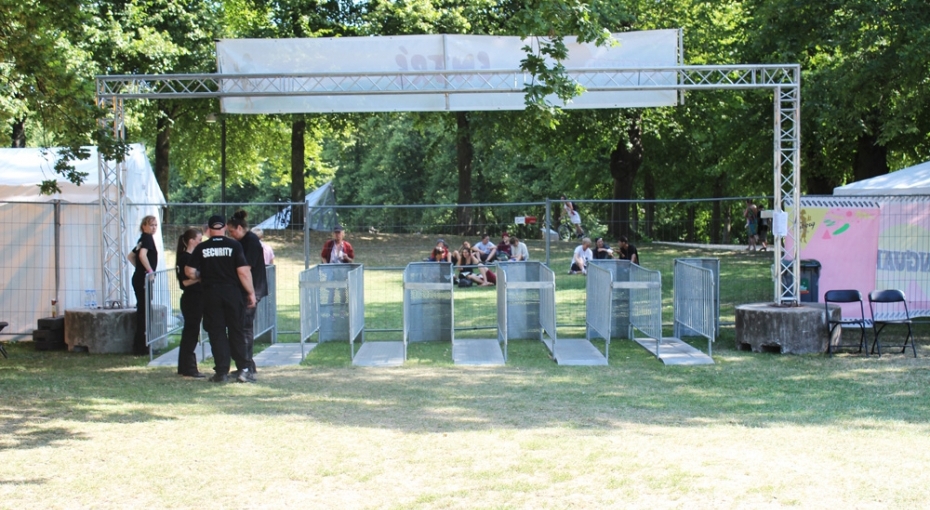Waste Management Planning for Outdoor Events
James Watson | Posted on |

If you’re planning a large outdoor event – be it a music, food or street festival – you already know how waste management can present a big headache. These types of events produce tonnes of waste (literally) and it takes some careful planning to get it right. Here are a few issues and related strategies to consider when doing your waste management planning for an outdoor event.
Open vs. Restricted Access Grounds
This is a question about whether your festival grounds are open to the general public and passersbys (as is the case with many street festivals) or whether the grounds are restricted to paying attendees. This is important for waste management planning as it can affect the kind of waste you can expect to see filling up your bins.
For unrestricted events open to the public, it’s a total free-for-all. Attendees will come onto the grounds with all kinds of garbage, including plastic water bottles, chewing gum packaging, tobacco products, etc. You can expect all of this to end up in your waste receptacles too, contaminating your waste streams and throwing a monkey wrench into your waste management plans.
- For unrestricted/open access events, you should expect your trash receptacles to become highly contaminated with all types of unexpected waste (e.g. your recycling bins will have all sorts of non-recyclable items).
- Check with your waste hauler to understand the acceptable levels of contamination that they accept for your recycling and/or organics waste streams.
- Any ambitious waste diversion targets will have to be supported by substantial back-of-house sorting (more on that below).

For events with restricted access grounds, you have a lot more control on the waste management front. For walk-up events with a security perimeter, for instance, you can prevent certain types of waste (e.g. plastic water bottles) from entering the grounds. The benefit here is that you have a much better grasp on the kind of waste that you’ll be dealing with.
- By restricting certain items or materials from entering the event grounds, you can limit the potential level of contamination in your trash receptacles.
- With a better understanding of the types of waste you can expect, you should be able to confidently focus your waste diversion efforts on front-of-house strategies (more on that below).
Single vs. Multi-Stream Trash Bins
Going with single stream front-of-house receptacles (e.g. general trash bins) is the most common and simple strategy. However if you’re looking to achieve any degree of waste diversion, you’ll have to do some waste sorting back-of-house too.
- We advise setting up a large back-of-house station where paid staff or volunteers quickly sort through bags as they’re pulled and brought in from across the grounds.
- They should focus on recycling large and obvious items (like aluminum cans, plastic bottles, etc.) or items that could generate revenue (like deposit refunds from alcohol containers).
Going with a dual or multi-stream strategy (e.g. garbage + recycling + organics bins) can present considerable challenges for outdoor events. Our experience has shown that attendees cannot be overly relied upon to sort their waste correctly. Whether it’s confusion over what goes where or the general excitement of the event, if not managed correctly you’ll begin see that the recycling and organics bins are contaminated with all kinds of waste.
It’s not a total loss, however. Consider the following illustration:

As the saying goes, “garbage in, garbage out,” and achieving a good waste diversion rate is all about managing your inputs as much as your outputs. Placing multi-stream trash receptacles is a front-end initiative, and here are some strategies that can help maximize their effectiveness:
- If you choose to go the multi-stream route for an outdoor event, you’ll still very likely need to do some back-of-house waste sorting to achieve an ambitious diversion rate.
- Again, focus on large and obvious items to speed up the process and prioritize sorting of the recycling and/or organics bags in particular.
- Make sure that signage directing where to put recyclables/organics is very clear. Pictures can really help in this regard, or even displaying the items themselves (e.g. displaying a plastic Dixie cup above the recycling bin).
- Consider staffing your waste receptacles too. The benefit of this is not only better diversion, but the opportunity to engage and speak with attendees about your waste diversions initiatives (this is especially nice if looking to promote or brand your event as being “green”/environmentally responsible).
Bad Weather
As you can expect, weather can quickly mess up any nicely laid waste management plans. If it rains, for instance, the waste receptacles quickly become waterlogged. Beyond the obvious, here are some contingencies to consider in case of rain:
- As the waste receptacles become waterlogged and heavier, pulling bags may become more difficult. Expect your crews to take a bit more time completing their rounds in this mess.
- Attendees can become a little more hasty when tossing out their garbage in the rain, so your waste receptacles may become a little dirtier
- Any paper or cardboard sitting in exposed recycling bins could become saturated, thus decreasing its recyclability (waterlogged paper products cannot be recycled as readily). Your back of house sorting effort should shift its focus away from these materials in this instance.
Waste Management Planning for Outdoor Events
These are just a few of several issues to consider when doing your waste management planning for an outdoor event. The logistics of doing so can be tricky and if not done right, your costs can spiral out of control. Take some time to plan your waste management and diversion efforts appropriately and you’ll reduce your headaches come the day of the event.

2 Comments